GSA Trends 2019 #8 Nature in the city
Construction21 - La rédaction

In the 2019 edition of the Green Solutions Awards – Districts, there are 15 case studies participating, projects coming from all over the world, countries such as France, Belgium, Colombia, Russia, Brazil, China, Argentina, Austria and Malaysia. Among extensions, rehabilitations and renewals, the candidates meet major contemporary urban challenges: preservation and protection of natural resources, reduction of the carbon footprint and social inclusion.
-
Nature in the city and biodiversity
Even though nature and the city have not been always concepts that walked along side each other, this has been changing nowadays. Bringing back nature in to the cities is a way to improve thermal comfort to inhabitants, but beyond that, it's also a way to preserve the local flora and fauna. Among the candidates this approach was frequently present.
In Malaysia, a district committed to integrate a smart city along with strong presence of green spaces. Forest City implemented green walls in every building and wetlands, which promote the development of micro- ecosystems, with a sea grass reserve, they cover an area of 31,000 square meters.

In a different environment, but also with the aim to preserve biodiversity, Skolkovo Innovation Center in Russia concerns about the integration of the elements of nature the urban site. The landscape design minimizes the need for irrigation and chemicals, and is based on climate-tolerant plants that can survive on natural rainfall quantities. The district also has the concern to promote a diversified fauna and flora, with the creation of bushy shrubs and hedges, green-roofs and nest boxes. Is proven that light sources at night are responsible for the direct or indirect death of many species (insects, birds...). To prevent this, specific measures were deployed: limitation of lighting after 11 PM and use of low temperature sodium lighting bulbs outdoors.
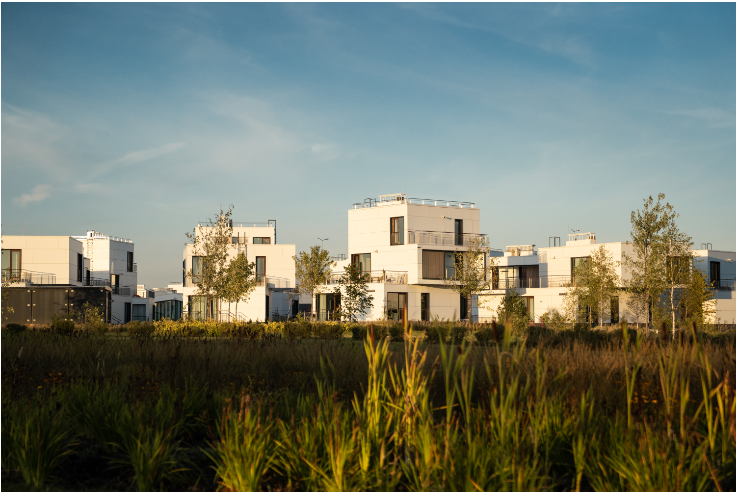
During the urban renewal of Volenne Eco-district existing plants have been maintained, it was also part of the project the creation of green shared spaces, including pedagogical garden, collective orchard, family gardens and a place for children.
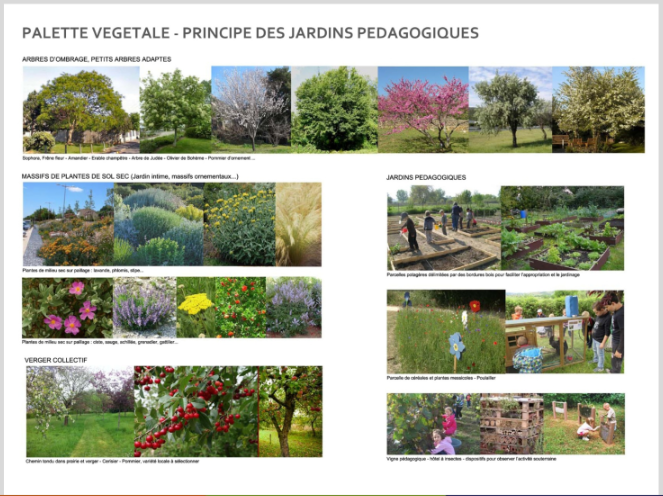
-
Water management
In ancient urban models, water was not treated as a valuable resource, an example of that is the massive sealing of the soil. However nowadays it is known that this is one of the main reasons of soil degradation, it can also affect biodiversity, increase the risk of flooding and water scarcity and contributes to global warming. Due to these consequences is important to reintegrate water in a different way into the urban environment.
The Chinese district Guangzhou Nansha Lingshan Island Area implemented a water conservation plan with comprehensive measures to improve water use efficiency, project management, as well as water conservation awareness. The region made a management demonstration zone for water supply, which has become a model for smart water and water management in the city.
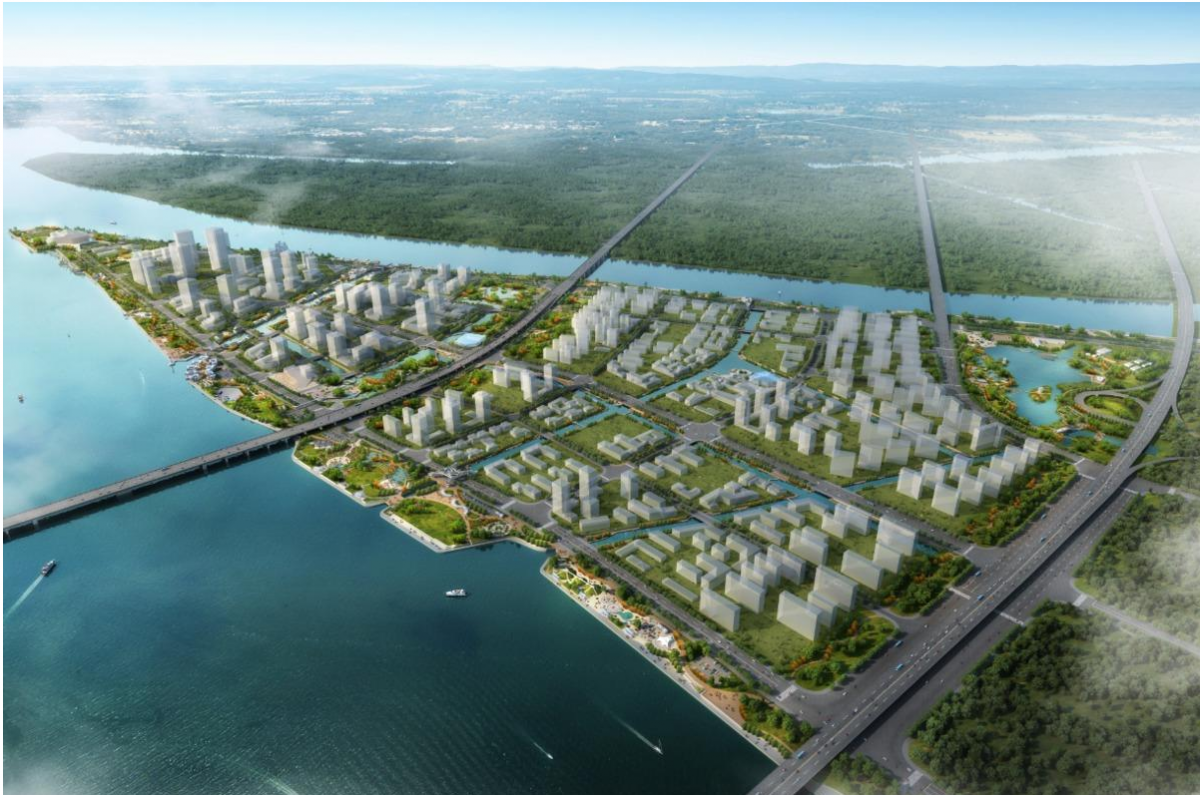
Water management was a point of attention since the sketch of the project Reconfiguration of the Fontainas islet. The innovative system is carried out thanks to the careful design of the park's topography and the implementation of a series of valleys and shallow basins collecting water from all the roofs and surrounding areas. The project is nearly zero rainwater discharge thanks to natural infiltration and delay of rainwater runoff.
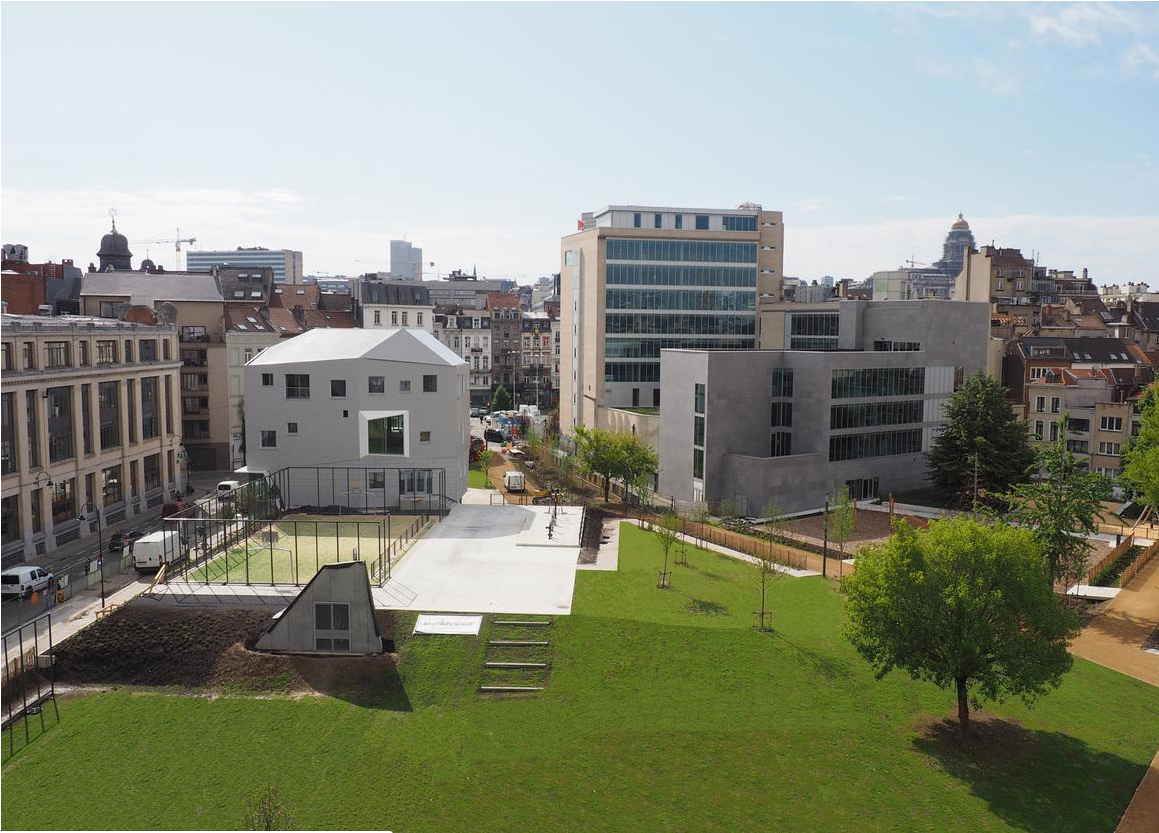
-
Circular Economy and Local Materials
Construction and demolition are responsible for 33% of the waste generated in the European Union [1], with such expressive numbers it is not surprising that this is a challenge to be overcome. To combat this reality, implementation of solutions with the use of local materials followed by a circular economy is growing. Those approaches decrease carbon footprint, promote local economy and recycling.
One of the key axes of Hibiscus Eco-district is the use of local materials and know-how. In Guyana, due to the geographical distance of the department and the narrowness of the local market, domestic production of industrial and artisanal products is limited. Some of the solutions applied in the project were use of local wood, concrete made on site, and asphalt produced with a local aggregate (grey granite). Soil treatment was applied to limit the use of imported chemical products in the construction of the roads.
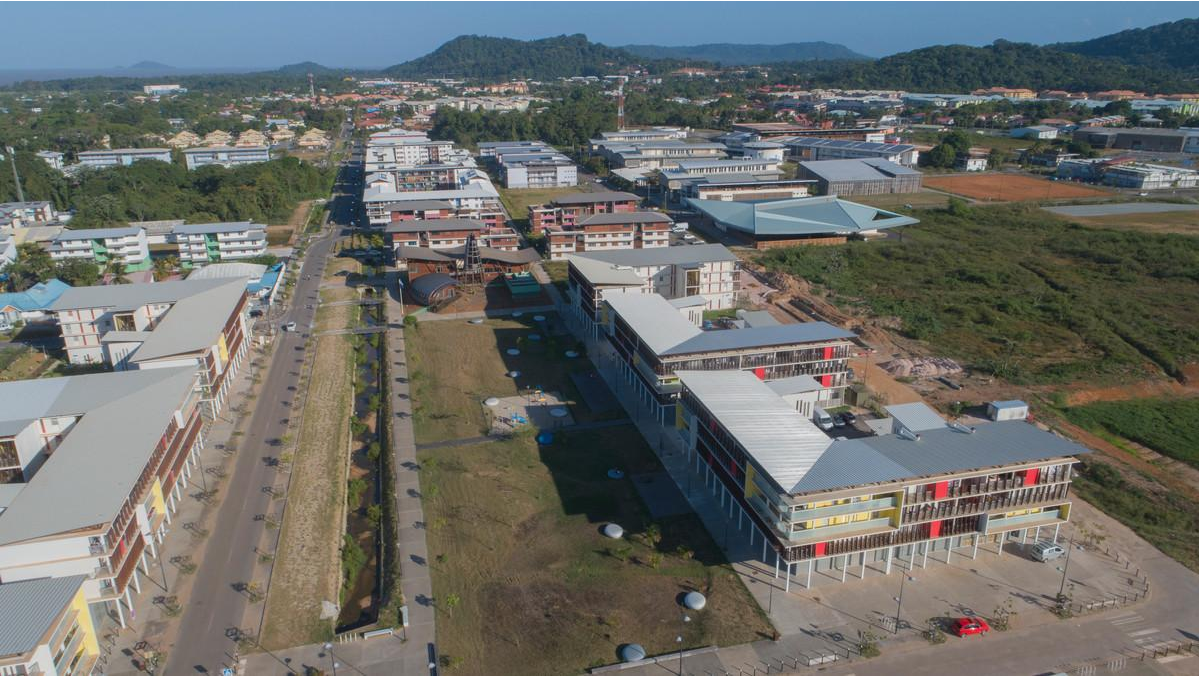
Realized in the city of Bogotá, the Master Plan of Sports and Recreational Equipment has built 100 synthetic sport fields using recycled tires. In total 440,000 tires have been used in the project contributing to clean the city.




